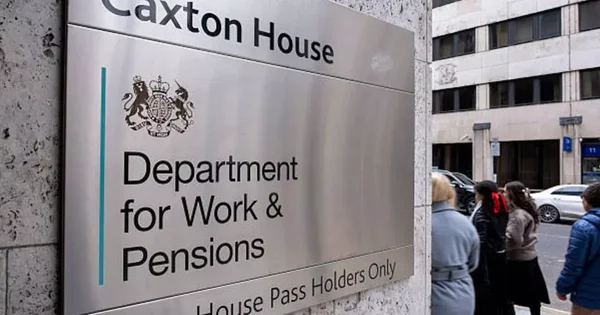Let’s Break This Down Together...
Seed funding can feel like a confusing maze of investors, shares, and tax rules. It’s exciting to raise your first round, but knowing how it all works for tax can be tricky.
This article walks you through the essentials from building a solid business plan and managing your funding, to unlocking SEIS/EIS tax reliefs and avoiding common pitfalls. You’ll also learn how to stay compliant with HMRC and keep your investors smiling.
By the end, you’ll understand how to make your startup investment work smarter, not harder. Ready to make sense of seed funding tax once and for all? Let’s dive in.
What exactly is seed capital funding, and how is it taxed?
Seed funding is the initial money that helps startups get off the ground. Seed funding is also known as seed capital, seed money, or initial capital, and is the initial capital raised to help startups cover essential expenses and demonstrate proof of concept. It’s typically the first official round of investment, ranging from £10,000 to £500,000 for most UK startups.
This early cash usually comes from angel investors, friends and family, or early-stage venture capital firms. Seed funds, high-net-worth individuals, and angel investors are common funding sources, and accelerator programs can also provide initial capital. In exchange, they receive equity a slice of your company.
The money itself isn’t taxable income for your business. Instead, it’s capital that goes on your balance sheet. Seed funding is a form of equity financing, and may also be structured as a convertible security, which can convert into future equity during later funding rounds.
How you spend it, structure it, and report it has significant tax implications. Having a clear plan and business strategy, supported by thorough market research and an understanding of market size and customer acquisition, is crucial for raising funds and attracting investor interest.
Most startups, especially high-growth companies, require more money than founders can provide, and raising money from external funding sources is a common part of a startup's journey. The initial capital raised is often used to build a minimum viable product, establish a strong foundation, and create a track record to attract larger investments from venture capitalists.

Creating a Solid Business Plan
A robust business plan is the cornerstone of any successful startup journey, especially when it comes to raising pre-seed funding. For first-time founders, a well-crafted business plan does more than just outline your business idea it demonstrates to potential investors that you’ve done your homework on the market opportunity, understand your competitive advantage, and have realistic financial projections in place.
Your business plan should clearly define your target market, customer needs, and the distribution channels you’ll use to reach them. It’s your chance to show how your product or service stands out in a crowded field and why your team is best positioned to deliver. Don’t forget to include key milestones, such as product launches or early sales targets, and detail the funding requirements needed to hit those goals.
By presenting a comprehensive business plan, startup founders can instill confidence in potential investors, making it easier to secure pre-seed funding. It also serves as a roadmap for your team, helping everyone stay focused on growth and track progress as you move from idea to execution.
Managing Pre-Seed Funding
Once you’ve secured pre-seed funding, managing those resources wisely is crucial for your startup’s survival and growth. Startup founders should start with a clear business plan that outlines exactly how the funds will be used whether it’s for product development, conducting market research, or hiring key talent.
Financial discipline is key. Set up systems to track every pound spent and monitor your cash flow closely. Regularly review your progress against the key milestones in your business plan to ensure you’re on track. This not only helps you make informed decisions but also demonstrates to potential investors, including angel investors and venture capital firms, that you’re a responsible steward of their capital.
Building relationships with other investors early on can open doors to future funding rounds. Keep communication lines open, share your progress, and seek advice from those with experience in venture capital. By managing your pre-seed funding effectively, you’ll extend your runway, hit critical milestones, and position your startup for larger investments down the line.

Tax benefits that make angel investors love SEIS and EIS
The UK government offers brilliant tax incentives to encourage investment in early-stage companies. These schemes are often deal-makers for potential investors.
Under the Seed Enterprise Investment Scheme (SEIS), investors can claim 50% income tax relief on investments up to £100,000. The Enterprise Investment Scheme (EIS) offers 30% relief on investments up to £1 million. Investors who hold shares for at least three years pay no Capital Gains Tax on any profits when they sell. If the business fails, they can claim loss relief against their income tax bill.
These benefits make your startup much more attractive to potential backers. SEIS/EIS incentives can significantly boost investor interest, and in many cases, investors may receive preferred stock, which grants them specific rights and privileges such as voting rights and priority in exit scenarios. Many angels won’t even consider investments that don’t qualify for these schemes.
Tax reporting essentials for funded startups
Once you've secured seed funding, you'll need to issue SEIS or EIS compliance certificates to your investors. This allows them to claim their valuable tax relief.
Getting advance assurance from HMRC before raising money is highly recommended. It's not mandatory, but it gives investors confidence that their tax benefits are secure.Your corporation tax return must accurately reflect investment details. Keep an eye on VAT thresholds seed funding expenses might push you over the registration limit.
Accurate record-keeping isn't just good practice, it's essential for your investors to claim their tax reliefs. Poor documentation can lead to disgruntled backers and HMRC penalties.
Startup founders' tax traps to avoid
If your seed funding comes as a loan rather than equity, you might face personal tax liability. Seed investors may have different preferences for equity or debt, so founders should understand the decision-making process behind each funding structure. Always clarify the structure with your accountant.
Watch out for how new investment dilutes your shareholding. It could affect your eligibility for Business Asset Disposal Relief (formerly Entrepreneurs’ Relief) when you exit. The valuation set during your seed round affects future tax on exits and employee share schemes. Setting it too low or too high can create tax headaches later.
I once advised a founder who accidentally structured his seed round as convertible debt without understanding the tax implications. He ended up with a personal tax bill that could have been avoided with proper planning.
Seed funding can impact your R&D tax credits and grant funding eligibility. Make sure you understand how these interact before making spending decisions.

Due Diligence and Investor Relations
Due diligence is a vital part of the pre-seed funding process, where investors take a close look at your business model, financial projections, and market potential. As a founder, you should be ready to provide detailed market research, a clear explanation of your business model, and evidence of your startup’s growth potential.
Transparency is your best friend here. Be upfront about your team’s experience, your technology, and any intellectual property you hold. Investors want to see that you’ve thought through the challenges and have a plan to address them.
Strong investor relations go beyond the initial funding round. Keep your investors updated with regular progress reports, listen to their feedback, and be open to their advice. By building trust and maintaining open communication, startup founders can secure not just pre-seed funding, but also ongoing support and guidance as the business grows.
Common tax mistakes with seed funding
Many founders miss SEIS/EIS deadlines or compliance requirements, which can invalidate tax reliefs for investors. Create a tax compliance calendar to stay on track. Creating overly complex share structures with preferential rights can accidentally disqualify you from SEIS/EIS. Keep it simple in the early stages.
Failing to maintain proper spending records can cause problems with HMRC's requirements. Track how investment money is used meticulously.
Convertible notes and SAFE agreements have unique tax treatments that differ from straightforward equity. Make sure you understand the implications before signing.
Regulatory Compliance
Navigating regulatory compliance is essential for startup founders, especially in the early stages when securing pre-seed funding. Staying on top of legal requirements whether it’s intellectual property protection, employment law, or financial reporting can save you from costly setbacks down the road.
It’s wise to consult with legal counsel and financial advisors early to ensure your business is meeting all necessary regulations. This includes data protection, tax compliance, and anti-money laundering rules, which are increasingly important to both investors and customers.
By prioritising regulatory compliance, you not only protect your business from legal and financial penalties but also build credibility with potential investors. Demonstrating a proactive approach to compliance can make your startup more attractive to those providing financial support, and help you take full advantage of available tax incentives and funding opportunities as you grow.

Alternative equity financing structures and their tax treatment
Convertible loans are treated differently for tax purposes than pure equity investments. Choosing the right funding source is important for securing funding and optimising tax outcomes, as different sources and structures can impact eligibility for reliefs and compliance. They typically don’t qualify for SEIS/EIS until conversion.
Innovation grants from Innovate UK or Horizon Europe are usually tax-free and don’t dilute your equity. They’re worth exploring alongside equity funding. Crowdfunding platforms bring their own tax reporting requirements. You’ll need systems to track numerous small investors for SEIS/EIS purposes.
R&D tax credits can provide cash flow support alongside seed funding. They can return up to 33% of your qualifying R&D expenditure.
Final Thoughts
Getting seed funding tax right isn't just about avoiding HMRC problems. It's about maximising the value of your investment and keeping your investors happy.
The UK offers some of the world's most generous tax incentives for startup investment. Taking full advantage requires planning and attention to detail.
Working with tax advisors who understand the startup ecosystem can save you thousands in the long run. It's an investment that pays for itself many times over.
Pie tax: Simplifying Seed Funding Tax
Starting your funding journey on solid tax foundations makes future rounds much smoother. It also makes your startup more attractive to potential investors.
Pie tax, the UK's first personal tax app, gives founders real-time tracking of SEIS/EIS allowances and investment status. This helps you stay compliant without the stress.
Our dashboard lets you monitor both company and personal tax positions. You can see exactly how your seed investment affects your overall tax picture.
We send timely reminders for SEIS/EIS compliance deadlines and streamline your HMRC applications. Nothing falls through the cracks when you're busy building your business.
Fancy seeing how it works? Pop over to our website to explore the Pie tax app features for yourself.

Quick and Easy Guide to Adding SEIS Tax Relief in the Pie App
Follow these easy steps to ensure your tax reliefs are accurately recorded for your self-assessment:
To add SEIS tax relief, simply tap ‘Quick Add’ on the home screen of the Pie Tax App. From there, select ‘Add Tax Relief’, then choose ‘Tax Relief Investment Schemes’.Step 1

Next, select the specific investment relief you want to claim. Enter the name of the investment, the amount, and the date the investment was completed.Step 2










